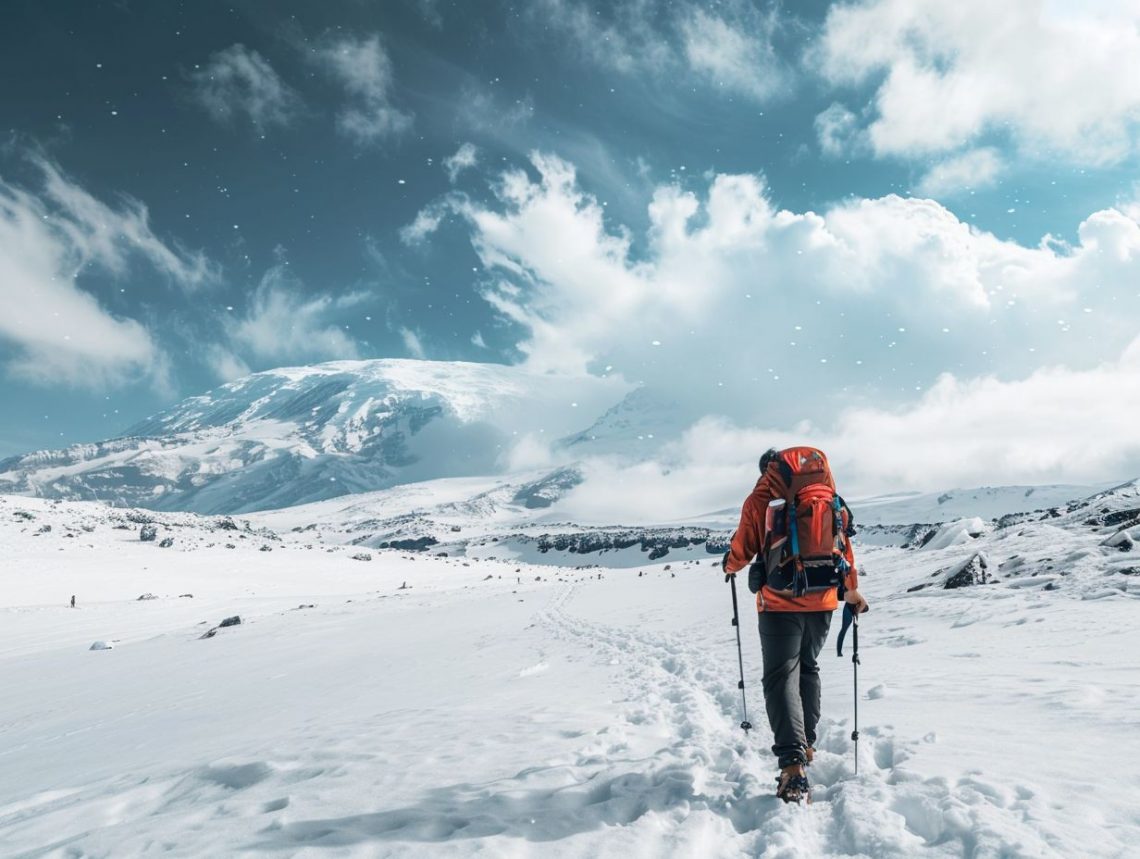
Climbing Kilimanjaro Tips
Have you ever dreamed of conquering the mighty Mount Kilimanjaro?
This article is your ultimate guide to preparing for and successfully climbing Africa’s highest peak.
From the best time to climb to essential training tips, route selection, and post-climb recovery, we cover everything you need to know for a safe and unforgettable adventure.
Whether you’re a seasoned hiker or a novice explorer, these tips will help you make the most of your Kilimanjaro experience.
Key Takeaways:
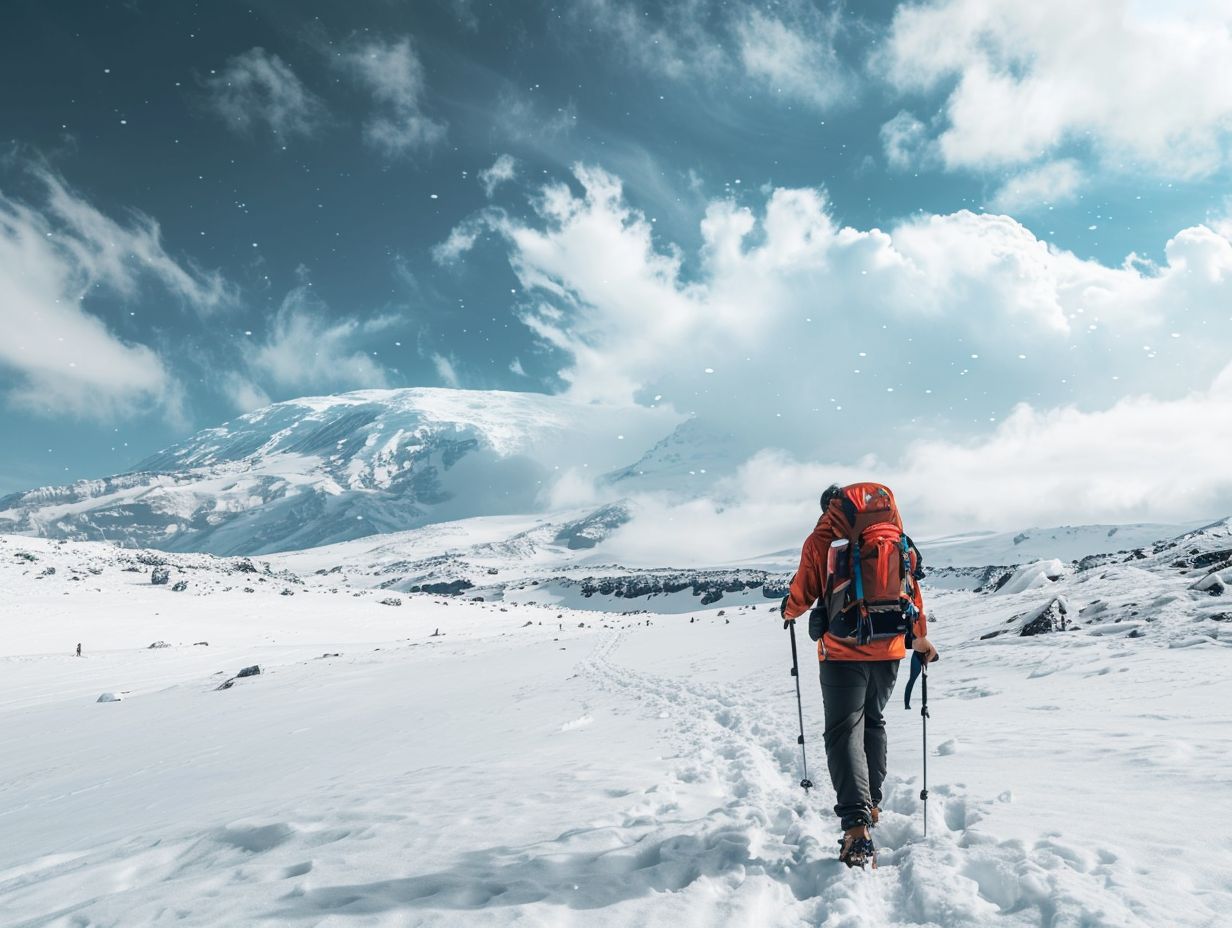
- Make sure to train physically and mentally before attempting to climb Kilimanjaro, as it is a challenging and strenuous trek.
- Choose the right route for your skill level and preferences to increase your chances of a successful climb.
- Be prepared for altitude sickness and other common challenges by staying hydrated, taking breaks, and following the guidance of experienced guides.
Why is Climbing Kilimanjaro Popular?
Climbing Kilimanjaro is popular due to its status as the highest peak in Africa, offering a challenging yet achievable climb for adventurers and hikers.
The allure of Kilimanjaro lies not only in its impressive elevation but also in the diverse ecosystems one encounters during the ascent.
From lush rainforests teeming with wildlife to barren alpine deserts, each day of the trek presents a unique landscape and set of challenges.
The sense of accomplishment upon reaching the summit, Uhuru Peak, is unmatched, with panoramic views stretching across the African plains.
The shared camaraderie among fellow climbers, the expert guidance of experienced guides, and the opportunity to witness the sunrise from above the clouds further add to the attraction of this legendary climb.
Preparation for Climbing Kilimanjaro
Preparation for climbing Kilimanjaro involves meticulous planning, acquiring the necessary gear, altitude acclimatization, safety protocols, and physical training to tackle the challenges of the ascent.
What is the Best Time to Climb Kilimanjaro?
The best time to climb Kilimanjaro is during the dry seasons, which typically occur from late June to early October and from late December to early March, to avoid the rainy periods.
During these dry periods, climbers can expect more stable weather conditions with clear skies and minimal rainfall, creating favorable climbing conditions.
The temperatures during these peak seasons range from mild to warm, providing comfortable trekking experiences.
The variation in altitude on Kilimanjaro also leads to diverse microclimates throughout the ascent, influencing the weather patterns encountered by climbers.
Understanding these climatic nuances is crucial for planning a successful and safe climb on Africa’s highest peak.
How to Train for Climbing Kilimanjaro?
Training for climbing Kilimanjaro involves a combination of cardiovascular exercises, strength training, and mental preparedness to endure the physical and mental challenges of high-altitude trekking.
It is essential to focus on building aerobic fitness through activities like running, cycling, or swimming, which can improve your endurance for the long trek ahead.
Incorporating strength training exercises targeting the lower body muscles will help enhance your stability and power while navigating the steep terrain.
Altitude simulation strategies such as sleeping in an altitude tent or spending time at high-altitude locations can assist in acclimatization and prep your body for the reduced oxygen levels you’ll encounter on the mountain.
Mental conditioning techniques, such as visualization, positive affirmations, and mindfulness practices, can strengthen your mental resilience and help you stay focused and motivated during challenging moments of the climb.
What to Pack for Climbing Kilimanjaro?
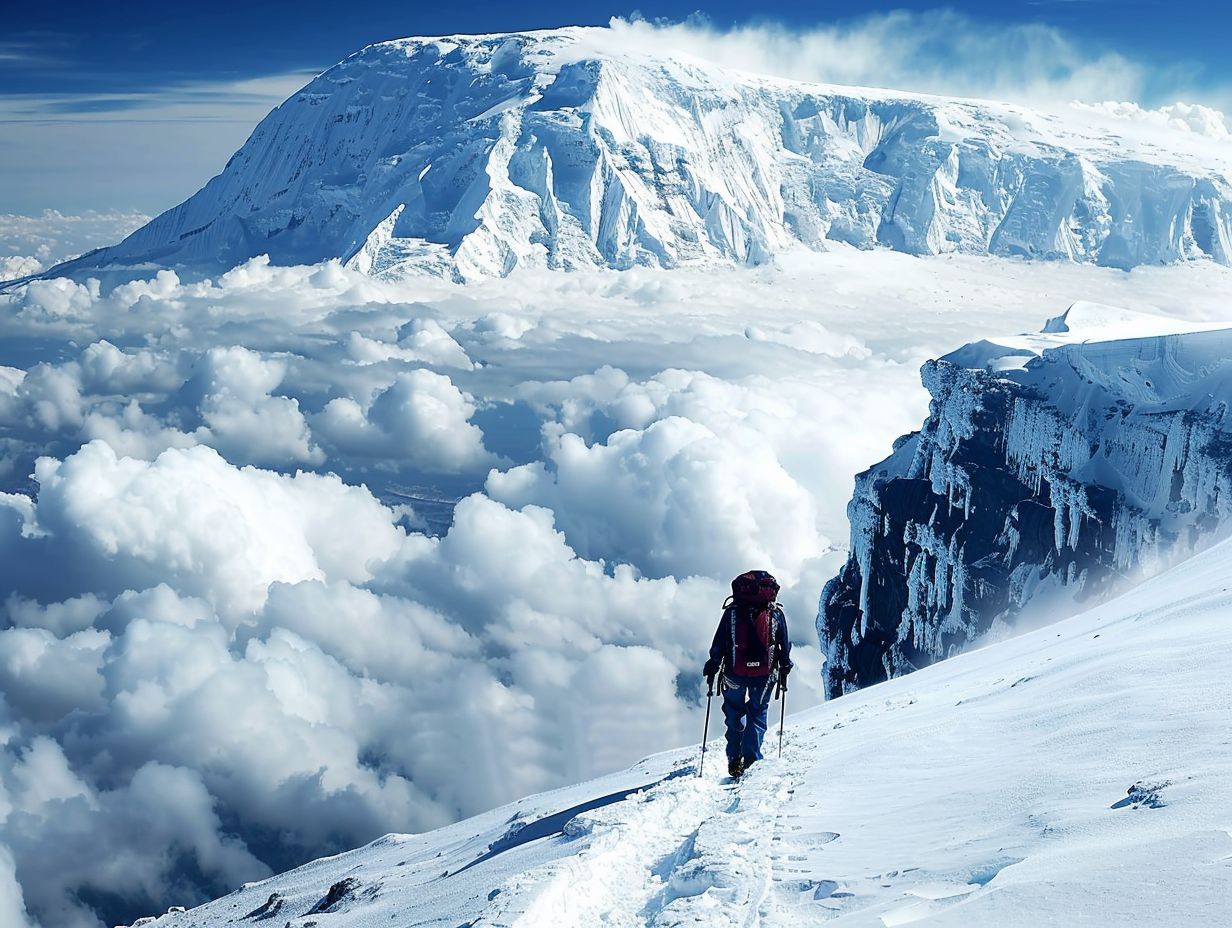
Packing for a Kilimanjaro climb requires essential gear such as thermal layers, a down jacket, a sleeping bag, head torch with spare batteries, and appropriate hiking boots to tackle the terrain.
It is important to have a sturdy backpack to carry your essentials, waterproof outer shell to protect against the elements, trekking poles for stability, and a hat and sunglasses for sun protection.
Water purification tablets or a filtration system are crucial for safe drinking water along the trail, while high-energy snacks like nuts and energy bars provide quick fuel during the trek.
First aid kit, emergency blanket, and a whistle for signaling are important safety items to have in case of unforeseen situations.
Choosing the Right Route
Choosing the right route for climbing Kilimanjaro is crucial, as each trail offers unique landscapes, challenges, and acclimatization opportunities for trekkers aiming to reach the summit.
What are the Different Routes to Climb Kilimanjaro?
Mount Kilimanjaro offers several routes for climbers, including the Marangu, Machame, Lemosho, and Rongai routes, each presenting distinct challenges and experiences on the journey to the summit.
Each route has its unique characteristics.
- The Marangu route, often called the ‘Coca-Cola’ route due to its popularity, features hut accommodations along the way, providing a more comfortable lodging option.
- In contrast, the Machame route, known as the ‘Whiskey’ route, is famous for its stunning scenery and varied landscapes, making it a favorite among seasoned hikers.
- The Lemosho route, on the other hand, offers a longer, more gradual ascent, allowing for better acclimatization and increased chances of reaching the summit.
- The Rongai route, located on the northern side of the mountain, provides a quieter trek with beautiful views and a sense of solitude.
Which Route is the Best for Me?
Choosing the best route for your Kilimanjaro climb depends on factors like trekking experience, acclimatization preference, desired scenery, and the overall challenge level you seek in the ascent.
Consider starting with the Machame Route if you are looking for a popular option that offers a good balance of challenge and scenic beauty.
On the other hand, the Marangu Route, known as the ‘Coca-Cola Route’, is ideal for those seeking relatively more comfort with overnight huts along the way.
For the adventurous souls looking for a more remote and less crowded experience, the Northern Circuit could be a perfect fit.
Ultimately, the choice of route should align with your personal goals and comfort level to make your Kilimanjaro climb a memorable journey.
Tips for a Successful Climb
To ensure a successful climb on Kilimanjaro, climbers should prioritize safety, acclimatization, hydration, and proper gear selection to overcome the challenges of high altitude and unpredictable weather conditions.
What are the Common Challenges of Climbing Kilimanjaro?
Climbing Kilimanjaro presents challenges such as altitude sickness, extreme weather conditions, physical exhaustion, and mental fatigue, requiring climbers to be well-prepared and resilient.
One of the most daunting aspects for climbers is the potential risk of developing altitude-related illnesses as they ascend the towering heights of Kilimanjaro.
The body’s struggle to acclimatize to lower oxygen levels can lead to symptoms like headaches, nausea, and fatigue, making it crucial for trekkers to pace themselves and listen to their guides’ advice.
The endurance required to trek for hours each day at high altitudes can lead to physical fatigue that may test the limits of even the fittest climbers.
Last but important, the psychological hurdles can be equally demanding. The mental fortitude needed to push through moments of doubt, exhaustion, and discomfort is often underestimated.
Climbers must rely on their inner strength and the support of their team to conquer these mental barriers and reach the summit.
How to Deal with Altitude Sickness?
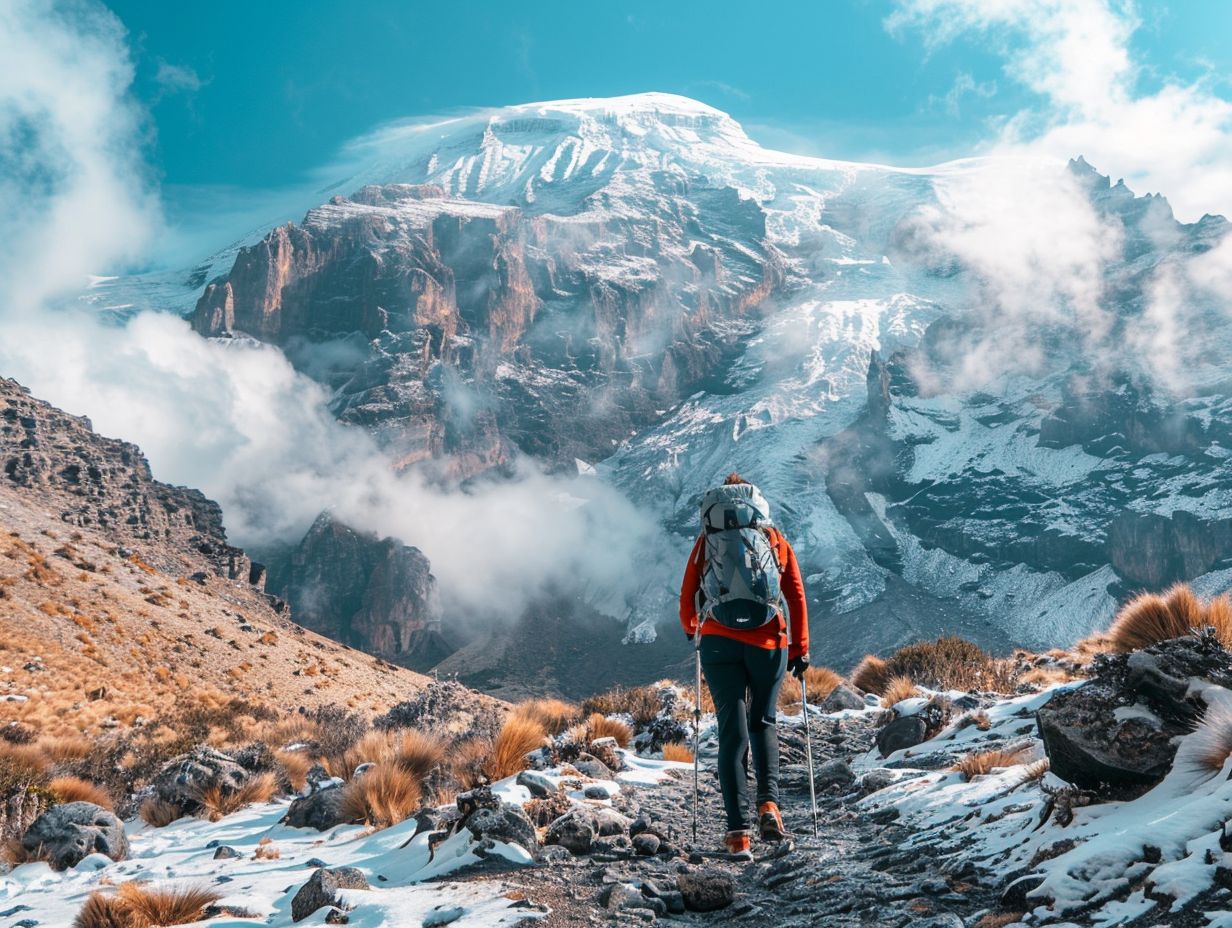
Altitude sickness is a common concern when climbing Kilimanjaro, with symptoms like headache, nausea, and fatigue.
Proper acclimatization, hydration, and medication can help manage and prevent altitude-related issues.
Recognizing the symptoms of altitude sickness is crucial during high-altitude climbs. The first signs are usually subtle, like a mild headache or feeling lightheaded.
It’s important not to ignore these early warning signs as they can escalate quickly. As altitudes increase, symptoms may worsen, leading to more severe issues like vomiting and confusion.
For climbers, ensuring a gradual ascent and allowing the body time to adjust plays a key role in avoiding altitude sickness.
What are the Essential Tips for a Successful Climb?
Essential tips for a successful Kilimanjaro climb include maintaining a steady pace, staying hydrated, listening to your body, following the lead guide’s instructions, and embracing the journey with a positive mindset.
Hydration plays a crucial role in altitude trekking. Apart from carrying a sufficient amount of water, consider using electrolyte tablets to replenish minerals lost through exertion.
Go for a hydration system that allows for easy access while on the move, ensuring you drink regularly to avoid dehydration.
When trekking, utilize the ‘Pole Pole’ approach, Swahili for ‘slowly slowly’. It’s not a race but a steady progression.
Being in tune with your body helps prevent altitude sickness and exhaustion. Listen to your guide’s advice on rest breaks and respect the acclimatization process.
After the Climb
After completing the Kilimanjaro climb, adventurers can expect a sense of accomplishment, physical exhaustion, and a deeper appreciation for nature’s wonders, reflecting on the challenging yet rewarding journey they undertook.
What to Expect After Climbing Kilimanjaro?
After climbing Kilimanjaro, climbers can expect a mix of emotions, including a sense of achievement, physical fatigue, and perhaps a newfound perspective on personal limits and nature’s grandeur.
The sore muscles and tired limbs serve as constant reminders of the arduous trek, prompting a well-deserved period of physical recovery.
Time spent in quiet contemplation, whether surrounded by fellow climbers exchanging stories or in solitary moments, can help digest the intensity of the summit.
Post-climb, individuals may also find themselves longing for the simple comforts of a warm bed and a hearty meal, craving a return to routine amidst the lingering euphoria and fatigue.
How to Recover from Climbing Kilimanjaro?
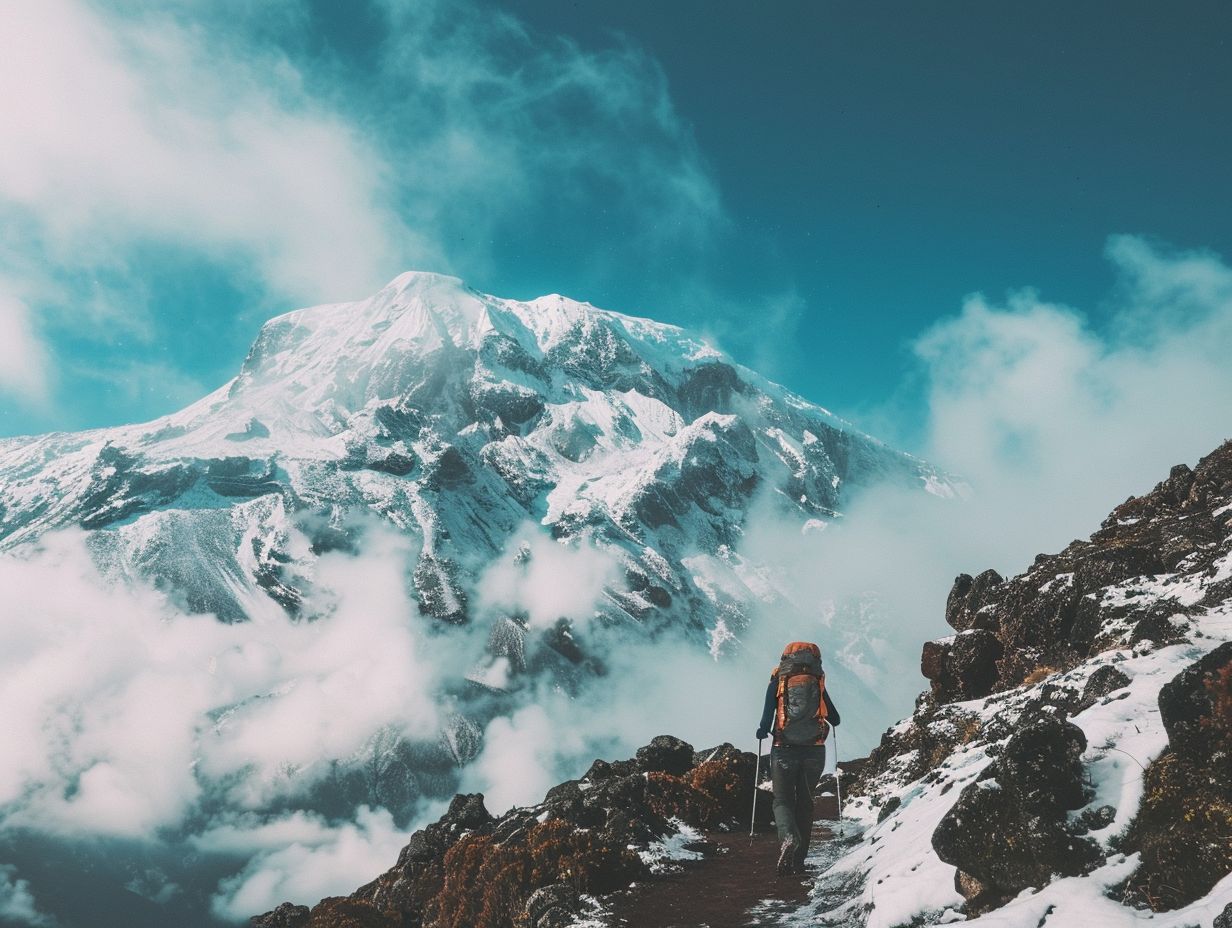
Recovery from climbing Kilimanjaro involves adequate rest, hydration, nourishing meals, gentle exercises, and mental decompression to revitalize the body and mind after the strenuous mountain ascent.
Restorative practices such as gentle stretching, yoga, or short walks can help ease muscle soreness and improve flexibility.
Ensuring proper hydration and consuming nutrient-dense foods rich in protein, vitamins, and minerals will aid in replenishing energy levels and supporting muscle recovery.
It’s essential to focus on mental wellness too; engaging in activities like meditation, journaling, or spending time in nature can promote emotional healing and reduce stress levels.
Taking the time to reflect on the climb, acknowledge achievements, and process any lingering emotional experiences is also part of the emotional processing phase of recovery.
By incorporating these self-care practices into their post-climb routine, climbers can enhance their physical and mental rejuvenation after the Kilimanjaro adventure.
Frequently Asked Questions
1. What are some essential tips for climbing Kilimanjaro?
A: Some essential tips for climbing Kilimanjaro include proper physical training, acclimatization, packing light, choosing the right gear and clothing, and staying hydrated.
2. How should I prepare physically for climbing Kilimanjaro?
A: Climbing Kilimanjaro requires a good level of physical fitness, so it is recommended to engage in cardiovascular exercises, strength training, and practice hiking on uneven terrain prior to the climb.
3. What is the best time of year to climb Kilimanjaro?
A: The best time of year to climb Kilimanjaro is during the dry season, which is from June to October. This ensures better weather conditions and higher chances of summiting.
4. What is the altitude sickness like on Kilimanjaro?
A: Altitude sickness, also known as acute mountain sickness, is a common occurrence when climbing Kilimanjaro. Symptoms may include headache, nausea, dizziness, and fatigue. It is important to acclimatize properly to avoid severe altitude sickness.
5. What items are essential to pack for a Kilimanjaro climb?
A: Some essential items to pack for a Kilimanjaro climb include a comfortable and sturdy pair of hiking boots, warm layers of clothing, a good quality sleeping bag, a waterproof backpack, and a lightweight and durable tent.
6. Can I climb Kilimanjaro without a guide?
A: It is not recommended to climb Kilimanjaro without a guide. The mountain is difficult to navigate and having a guide who is familiar with the terrain and weather conditions is essential for a safe and successful climb.